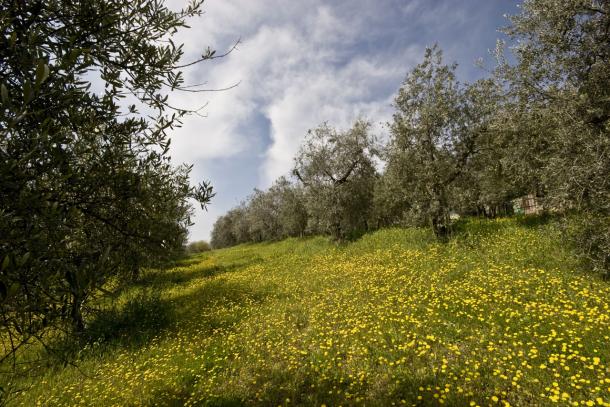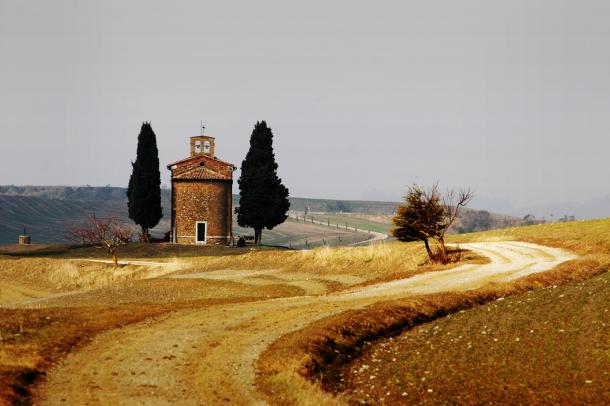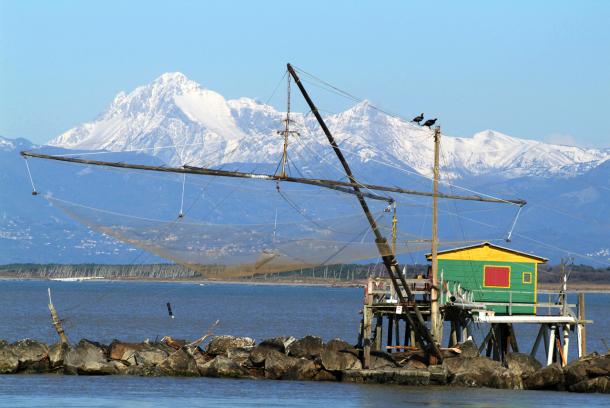The Food and Cuisine of Tuscany (Toscana)
Food in the Tuscany region of Italy has been defined by its elegant simplicity for millennia. Their expectations for quality are very high. Rather than create overly complex dishes with exotic ingredients, Tuscans expect to eat produce that is locally grown, in season and at the peak of ripeness. Historically, the region’s aromatic greenish-gold olive oil has been reserved for their own use, although it is now a major export crop, prized by connoisseurs all over the world.

While Tuscan cuisine is lacking imported ingredients, it is known for its dishes redolent with herbs and spices. Rosemary and sage are the two most commonly used aromatic herbs, either fresh in the summertime or dried for wintertime use. The saffron grown in this area of Italy is known for its premium flavor and aroma. The area is also famous for earthy white truffles and plump porcini mushrooms. Vegetables and white cannellini beans are baked slowly in terracotta casserole dishes until meltingly tender.
Tuscany breads are a staple food. Pane toscano, giant saltless loaves, are baked in wood fired ovens. The bread is either served fresh, slathered with olive oil and garlic before grilling, or left to go stale and used as an ingredient in cooking later on. While the pane toscano is the most frequently consumed bread, a flatbread called schiacciata is also popular. This can be flavored with rosemary or sweetened with fresh grapes.
One popular Tuscan recipe that uses leftover bread is panzanella salad. The stale bread is cubed, then moistened and tossed with seasoned tomatoes and left to soak up the juices before serving. Other times, the bread is used as a thickener in soups. Zuppa di pane, or bread soup, and pappa al pomodoro are very typical examples of this technique. Ribollita, literally translated to “reboiled”, is another popular soup that features bread to give it a full bodied texture. This dish cooks leftover minestrone soup with additional bread and vegetables until hearty.

Tuscany’s cuisine does not only feature filling soups and peasant breads. Pastas such as hand rolled papperdelle and spaghetti help round out the meals. Farro, a locally grown grain, is either used as whole kernels cooked until tender in soup or ground into flour to use for baking or making pasta. Corn polenta and rice are also staple foods in the Tuscan diet. These are often served in Tuscan cooking with succulent braised hare or duck and wine sauces. As with many of the local dishes, these sauces are able to stretch out a small portion of meat to feed many.
Platters of assorted roasted meat called arrosto misto may include pork, rabbit or different types of poultry and fowl. These meats are always prepared simply and all parts of the animal are eaten. One popular style of preparation alternates small birds with pieces of chicken livers and bread crusts on skewers. These are roasted over an open flame in a traditional manner dating back to the 15th century. Cibreo, a Florentine chicken stew, slowly simmers cock’s combs and unborn chicken eggs with giblets until tender and delicious. Tripe, the lining of a cow’s stomach, is simmered with broth, herbs, wine and tomatoes and served over bread in lampredotto.
For special occasions, Tuscans will prepare bistecca alla fiorentina. This Florentine style steak comes from Chianina cattle, one of the oldest breeds of beef cattle in the world. A large T-bone or porterhouse steak is grilled over charcoal until charred, seasoned with salt, pepper and olive oil. The meat is sliced thickly and served family style with Tuscan beans as the traditional accompaniment.
Other meat meals may include wild boar, often made into sausages and stewed. Boar may also be served grilled or roasted. Cinghiale in dolceforte is also enjoyed by many. This dish stews wild boar with wine and herbs slowly for a long time. Shortly before the dish is done, the sauce is finished with vinegar, sweetener, dried and candied fruits, and unsweetened chocolate.

Along the coast, seafood is commonly eaten. Cacciucco is a hearty soup made with fish and shellfish flavored with tomatoes, wine and chili peppers. However, this savory dish is unusual for Tuscan cuisine. The dishes are generally not highly spiced, though this should not be taken to mean that Tuscan recipes are bland. Great care is taken with each of the ingredients by choosing the herbs and local wines to bring out their flavors. Another seafood dish, known as baccalà alla fiorentina, features salt cured cod, which is fried and then stewed with tomatoes, garlic and onions.
Tuscan desserts are generally baked. Popular Tuscan recipes for cookies include crunchy twice baked cantucci, biscottini or ricciarelli. Cakes made with dried fruts and nuts are enjoyed in Siena and chocolate sponge cakes are flavored with liqueur in Florence. Most of these desserts are prepared with flour made from wheat, but locally grown chestnuts are dried over wood coals and also made into flour. This chestnut flour is used for crepes and pine nut cakes flavored with rosemary.
Tuscan food has a rich variety of simple but delicious dishes. Their insistence on high quality, fresh ingredients guarantees that the resulting food’s flavors will shine, despite a lack of rich sauces or elaborate decorations.
Tuscany protected local food products
Cheeses:
Pecorino Toscano DOP, Pecorino Romano DOP
Olive Oils:
Chianti Classico DOP, Lucca DOP, Terre di Siena DOP, Toscano IGP
Fresh & Cured Meats:
Lardo di Colonnata IGP, Mortadella Bologna IGP, Prosciutto Toscano PDO, Salamini italiani alla cacciatora DOP, Vitellone Bianco dell’Appennino Centrale IGP
Fruits:
Castagna del Monte Amiata IGP, Farina di Neccio della Garfagnana DOP, Marrone del Mugello IGP
Vegetables:
Fagiolo di Sorana IGP, Fungo di Borgotaro IGP
Breads & Cereals:
Farro della Garfagnana IGP
Other Gourmet Delicacies:
Miele della Lunigiana DOP, Zafferano di San Gimignano DOP
Learn more about:
The Wines of Tuscany (Toscana)
Authentic gourmet products:
Panforte: Siena’s Medieval Christmas Cake
